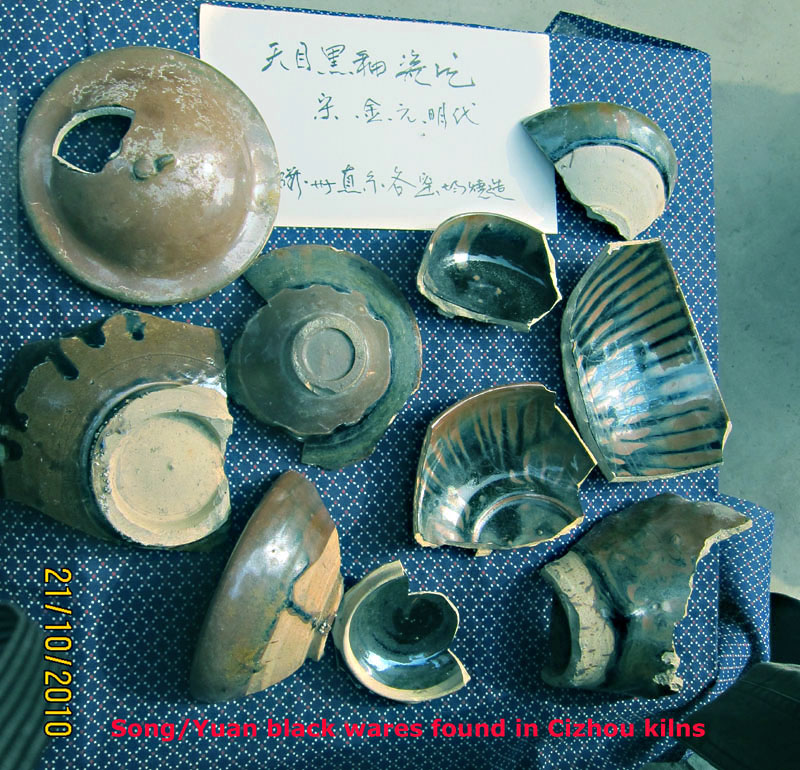Overglaze Polychrome painted
wares
During the Jin period, wares decorated with
overglazed green, yellow and red were introduced. The more notable kilns
producing such wares are Xiuwu Dangyangyu (修武当阳峪)
and Yuzhou Pacun (禹州扒村).
However, kilns Hebei Cizhou and Shanxi also produced them. Some fine
quality polychrome statues were found in the Linshui area. There are also
those, especially statues which used black enamel. Firstly, the
black enamel is applied to the required area, followed by glazing and firing
at a high temperature. The other overglaze enamels are then applied and
fixed by a second firing at a lower temperature. Jin overglaze
polychrome wares was an innovation and laid the foundation for subsequent Ming
Wucai wares.






Cizhou Sancai wares
Kilns in Hebei and Henan also produced low-fired
lead-glazed sancai wares. The popular method involved incised motif which
is then coloured with yellow, green or brown lead glaze. A category
of such items such as pillows, animals and human figures utilised
the molded techniques. Some of them were fixtures for the roof.

.Song Sancai lead
glazed pillow


Other Song/Yuan
wares produced in Hebei Cizhou kilns
There were other types of wares
produced in Hebei Cizhou kilns which cannot be classified as the typical Cizhou
type wares. In actual fact, they were generic products of many kilns in
Northern China.
Like other kilns in Henan, Yaozhou and
Shanxi, Hebei cizhou kilns also produced white wares with brown dots formed
stylised floral decoration and those with green splashes. Those with brown
dots stylised floral motif appeared to be produced even as late as the Ming
period.



Like many other kilns in Northern China,
the Hebei Cizhou region also produced large number of black glaze
wares. During the Yuan period, black glaze wares with iron brown splashes
were popular and produced in large quantity.




e
Lastly, Hebei Cizhou kilns also produced
Ding type white wares. Those Ding type wares started to appear in
Guantai kilns during the Mid Northern Song period. The quantiy recovered
was substantial. There were more thinly
potted and no slip was applied. Majority were those plain vessels without
impressed decoration. There were some Chinese experts who argued
that those fine Ding wares with impressed motifs attributed to Cizhou
kilns were actual Ding wares used by the Cizhou potters. However,
the number recovered near kilns sites such as those in Linshui, is too large to justify the argument. Furthermore, it is hard
to explain how the potters could afford such fine ceramics which were definitely
expensive as compared with other folk kiln wares. In fact, the Henan Hebi
ji kilns also produced such Ding type wares with impressed motif.



Jin White glaze ware with Ding
inspired impressed motif from Shanxi Jiexiu kiln
Page 3
Continue
to : Page
4, Return
to: Page 1,
Page 2, Home


















